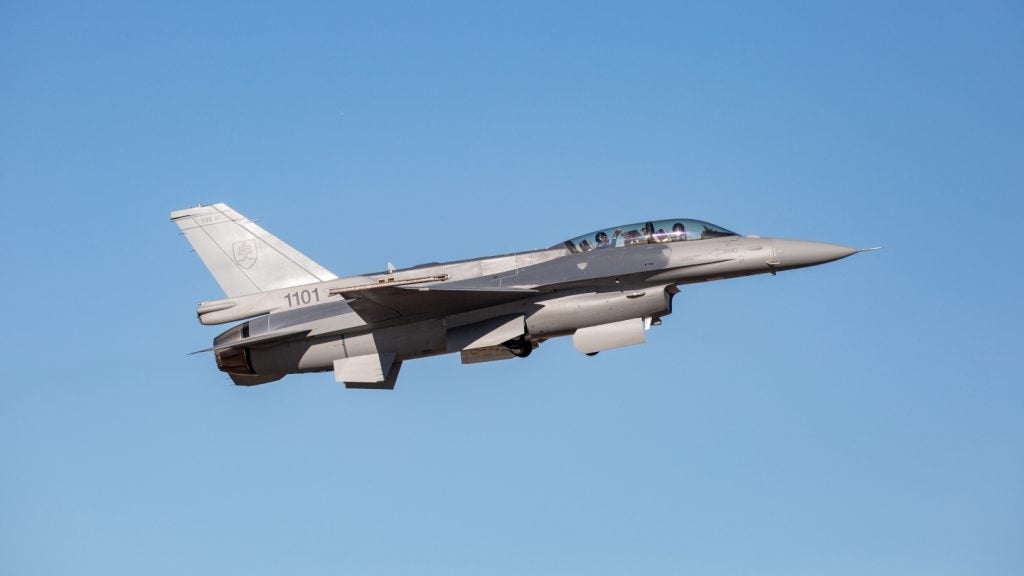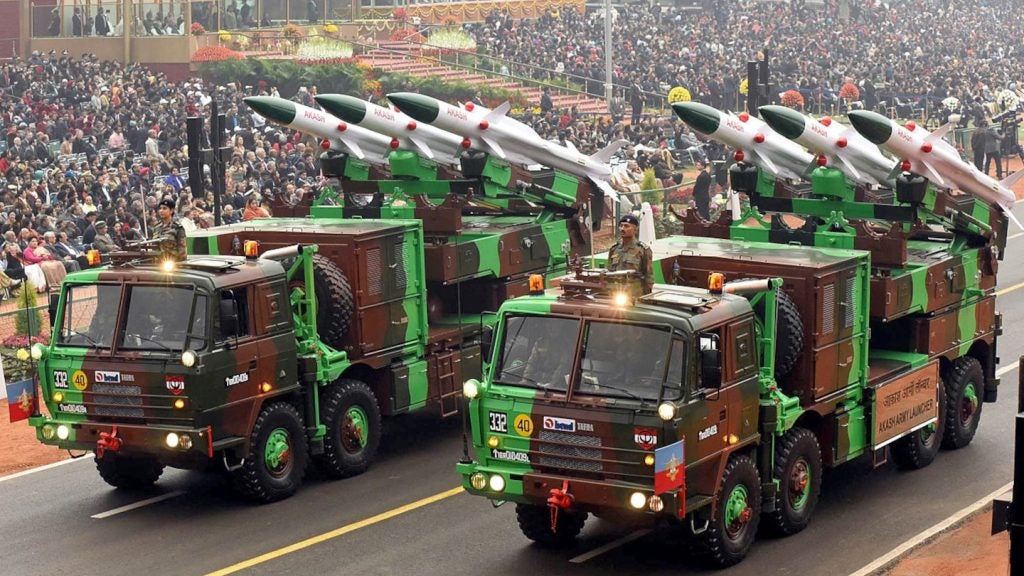J-7 is a single-engine, lightweight fighter aircraft designed and manufactured by Chengdu Aircraft Corporation (CAC) of China. Its design is based on its predecessor, the MiG-21 aircraft. The export version of J-7 has been designated the F-7.
The J-7 / F-7 has been built principally to meet the requirements of the People’s Liberation Army Air Force (PLAAF).
More than 2,400 J-7s have been built from 1996 to 2013. The production was stopped in May 2013.
J-7 fighter variants
In an effort to meet the operational requirements of the defence forces, the CAC developed 54 variants of the J-7 fighter.
Two types of J-7 variants have been built by the company, including a domestic Chinese variant and an export variant. About 28 domestic variants and 26 export variants are in operation worldwide.
Orders and deliveries
In August 2005, the Namibian Air Force ordered 12 F-7NM aircraft. And the Nigerian Air Force acquired 12 F-7NI fighters and three FT-7NI trainers from CAC in 2008; the first batch of aircraft was delivered in December 2009.
The Bangladeshi Air Force purchased 16 F-7MB, 16 F-7BG and eight FT-7B aircraft. These F-7MB aircraft were replaced with 100 beyond visual range-capable F-7BGs through to 2010.
The Pakistani Air Force (PAF) procured 120 F-7P and 60 F-7PG, while between 600 and 720 J-7s have been acquired by PLAAF. The Sri Lankan Air Force purchased 13 F-7BS and F-7G aircraft.
Further F-7 orders include those from the Sudanese Air Force (22), Egyptian Air Force (90), Tanzanian Air Force (16), Yemen Air Force (18), Air Force of Zimbabwe (24), Islamic Republic of Iran Air Force (24), Myanmar Air Force (64) and the North Korean Air Force (40).
Ground attack missions
The J-7 fighter has been designed to perform ground attack missions in all weather conditions. It can climb to higher altitudes with its delta wings at transonic and supersonic speeds.
The aircraft also features a small-sized airframe fitted with a powerful engine. It is suitable only for point air defence due to its short-range attacking capability.
Russian-Chinese relations
Russia signed an agreement with China in March 1961 to transfer the MiG-21 technology. The aircraft, along with assembly kits and technical documents were sent to Shenyang Aircraft Factory in August 1962.
The delivery of technical documents to Shenyang Aircraft Factory was, however, not carried out due to deteriorating relations between Beijing and Moscow. This allowed the company to develop its own version of the MiG-21 through a reverse engineering process. The Chinese-made MiG-21 was developed in March 1964 and initially known as Type 62. It was later redesignated as the J-7 (Jian-7).
The airframe of the J-7 was tested in November 1965 and the aircraft completed its maiden flight in January 1966. The J-7 was certified as an operational aircraft by the Chinese Military in June 1967. J-7s were produced at the rate of 14 aircraft per month during 1989. Despite the termination of production in 2008, the J-7 is currently in operation with a number of air forces worldwide.
Avionics on-board J-7
The aircraft is equipped with an efficient avionics system which includes a GEC-Marconi Avionics HUDWAC (head-up display and weapon aiming computer) plus GARMIN global positioning and bombing navigation systems.
It is also equipped with a Super Skyranger radar, an FIAR Grifo-7 mkII radar (export) and a Type 226 PD radar.
Armaments
The J-7/F-7 is armed with two 30mm cannons, which can fire munitions at the rate of 60 rounds a minute. The aircraft has five hardpoints, four of which are located under the two wings and one beneath the centreline fuselage section.
It can carry a payload of up to 2,000kg. The J-7 is fitted with PL-2, PL-5, PL-7, PL-8, PL-9, Magic R.550 and AIM-9 air-to-air missiles (AAM), unguided bombs weighing 50kg to 500kg, a 55mm rocket pod and a 90mm rocket pod.
Turbojet engine
Powered by a single Liyang Wopen-13F/WP-7 turbojet engine the J-7’s engine produces 44.1kN of dry thrust, while its afterburner thrust is 65.17kN. The developer of the WP-7 turbojet engine is Shenyang Aero Engine Factory.
Performance of J-7 fighter aircraft
The J-7 can climb at the rate of 155m/s, while the maximum and cruise speeds of the aircraft are 2,120km/h and 1,200km/h respectively. Its combat range is 850km. The ferry range of the J-7 is 2,000km and the aircraft can fly to a maximum altitude of 17,800m.
The take-off and landing distances of the aircraft are 800m and 750m respectively. The aircraft weighs around 5,292kg and its maximum take-off weight is 9,100kg.










